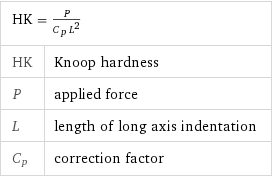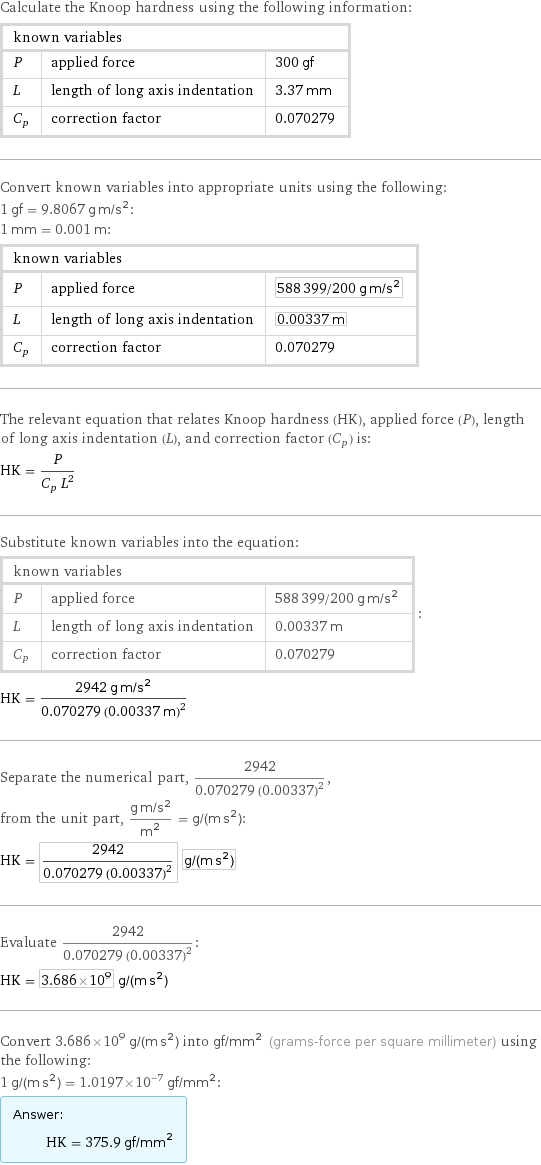Input interpretation

Knoop hardness
Equation

HK = P/(C_p L^2) | HK | Knoop hardness P | applied force L | length of long axis indentation C_p | correction factor
Input values

applied force | 300 gf (grams-force) length of long axis indentation | 3.37 mm (millimeters) correction factor | 0.07028
Results

Knoop hardness | 375.9 gf/mm^2 (grams-force per square millimeter) = 3.686 MPa (megapascals) = 3.686×10^6 Pa (pascals) = 534.6 psi (pounds-force per square inch)
Possible intermediate steps

Calculate the Knoop hardness using the following information: known variables | | P | applied force | 300 gf L | length of long axis indentation | 3.37 mm C_p | correction factor | 0.070279 Convert known variables into appropriate units using the following: 1 gf = 9.8067 g m/s^2: 1 mm = 0.001 m: known variables | | P | applied force | 588399/200 g m/s^2 L | length of long axis indentation | 0.00337 m C_p | correction factor | 0.070279 The relevant equation that relates Knoop hardness (HK), applied force (P), length of long axis indentation (L), and correction factor (C_p) is: HK = P/(C_p L^2) Substitute known variables into the equation: known variables | | P | applied force | 588399/200 g m/s^2 L | length of long axis indentation | 0.00337 m C_p | correction factor | 0.070279 | : HK = (2942 g m/s^2)/(0.070279 (0.00337 m)^2) Separate the numerical part, 2942/(0.070279 (0.00337)^2), from the unit part, (g m/s^2)/(m^2) = g/(m s^2): HK = 2942/(0.070279 (0.00337)^2) g/(m s^2) Evaluate 2942/(0.070279 (0.00337)^2): HK = 3.686×10^9 g/(m s^2) Convert 3.686×10^9 g/(m s^2) into gf/mm^2 (grams-force per square millimeter) using the following: 1 g/(m s^2) = 1.0197×10^-7 gf/mm^2: Answer: | | HK = 375.9 gf/mm^2
Approximate system conversions

Mohs | 4.2 Brinell | 339 kgf/mm^2 scleroscope | 49.8 Vickers | 361 kgf/mm^2 Rockwell A | 69.2 Rockwell B | 110 Rockwell C | 36.8 Rockwell D | 52.9 superficial Rockwell 15N | 79.2 superficial Rockwell 30N | 56.8 superficial Rockwell 45N | 39.8 (based on typical comparsions; results for particular samples may differ)
Units

Hardness comparisons

harder than fluorite (Mohs 4)

softer than apatite (Mohs 5)